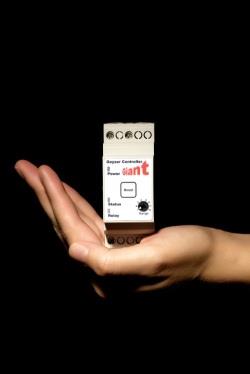When it comes to geysers and saving energy a lot of homeowners want to know more about the differences between a geyser controller and a geyser timer.

A geyser controller checks to see if there is still hot water in the tank before switching on the element, thus avoiding reheating the entire geyser unnecessarily.
Roger Bulgin from Mr. Power answers some of the most common questions…
1. Why does a geyser use so much electricity?
The geyser uses so much electricity because it’s continuously reheating the water inside the tank – the average geyser holds 150 or 200 litres of water. Every time it switches on, it is the equivalent of turning on 50 incandescent light bulbs.
Geysers reheat every time the temperature drops a few degrees - the thermostat switches the element back on and heats the water back up to the thermostat setting.
This makes the geyser the number one consumer of electricity in most households - sometimes using up to 60 percent of the total bill.
As an example, the average family uses around 130 hours of hot water a month but pay for 600 hours.
The average household geyser switches on and off 24 to 30 times a day.
2. How can I reduce the electricity used by my geyser?
Install a controller as it is programmed to switch off the geyser when hot water is not required in large amounts. The controller also ensures the geyser is off during peak hours.
A geyser controller can reduce your electricity bill by 20 to 30 percent, which is a huge saving (especially with the ever-increasing costs of power). Plus, you are doing your bit for the environment by saving energy.
3. Can I get a free geyser controller from Eskom?
Unfortunately not. Eskom ran a programme which ended in March 2013, where free geyser timers (not controllers) were given to select households in major cities – these were to ensure that geysers were off during the peak hours, not necessarily to save the consumer money.
In total, less than five percent of South African households received timers. Of the 95 percent who didn’t receive timers, they ideally should investigate the various options available first, to ensure an informed buying decision.
A geyser controller has been proven to be energy efficient.
4. What is the difference between a geyser controller and a geyser timer?
A timer simply turns the geyser element on and off during a specified time period, typically for two to three hours in the morning and evening.
It is important to understand that when it is on, the geyser element reheats the tank of water each time the hot water tap is used, regardless of the amount of water drawn from the tap.
A geyser controller checks to see if there is still hot water in the tank before switching on the element, thus avoiding reheating the entire geyser unnecessarily. In addition, the controller will switch the element off once the required water temperature is reached.
Unlike the timer, the geyser controller will only be active for the period of time necessary to get the water to the pre-set temperature and will then cancel the rest of the time period, thus avoiding unnecessary heating.
It also features a handy boost button which allows you to manually turn the geyser element on if needed.
5. How do I go about getting a geyser controller installed?
Call your electrician to supply and install the geyser controller, which sits neatly in or next to the electricity board in your home or office.
Installation is quick and simple.
6. How much will it cost to install a geyser controller?
Product and installation should cost around R1 500 – giving a return on investment in less than six months.
For more information, visit www.mrpower.co.za.








